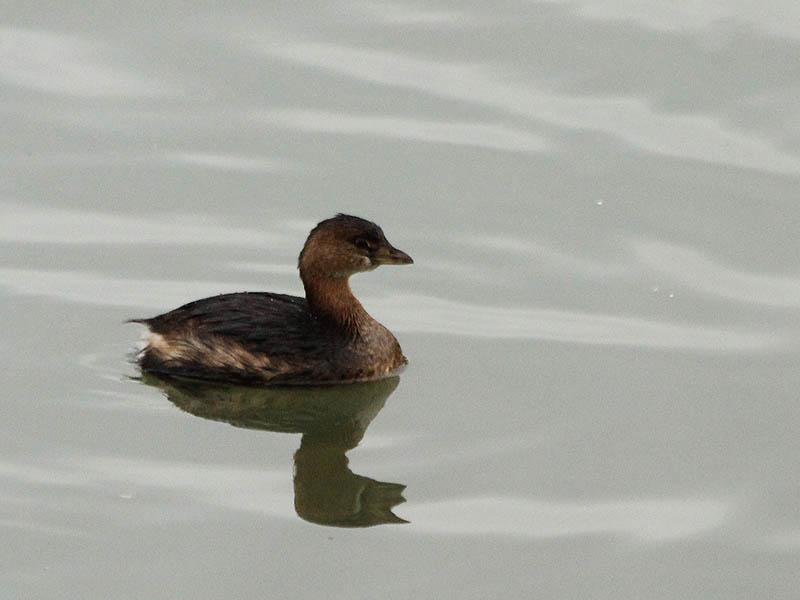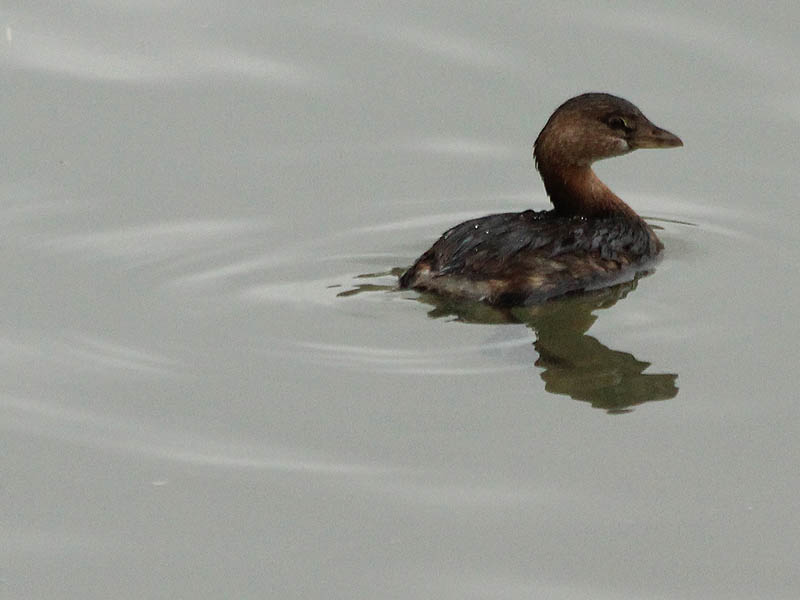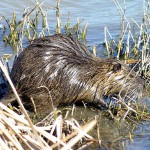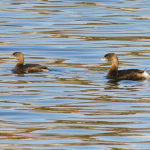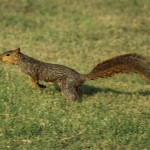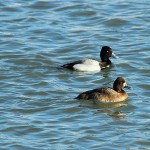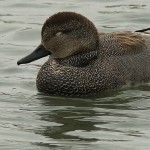These Pied-billed Grebes were seen swimming in a widening of Dudley Branch just before it converges with the Trinity River near Indian Creek Golf Course.
Wikipedia has this to say about Pied-billed Grebes:
The Pied-billed Grebe (Podilymbus podiceps) is a species of the grebe family of water birds. Since the Atitlán Grebe (Podilymbus gigas) has become extinct, it is the sole extant member of the genus Podilymbus. The Pied-billed Grebe is primarily found in ponds throughout the Americas. Other names of this grebe include American dabchick, dabchick, Carolina grebe, devil-diver, dive-dapper, dipper, hell-diver, pied-billed dabchick, thick-billed grebe, and water witch.
Pied-billed Grebes are small, stocky, and short-necked. They are 31–38 cm (12–15 in) in length, with a wingspan of 45–62 cm (18–24 in) and weigh 253–568 g (8.9–20.0 oz). They are mainly brown, with a darker crown and back. Their brown color serves as camouflage in the marshes they live in.[10] They do not have white under their wings when flying, like other grebes. Their undertail is white[9] and they have a short, blunt chicken-like bill that is a light grey color, which in summer is encircled by a broad black band (hence the name). In the summer, its throat is black. There is no sexual dimorphism. Juveniles have black and white stripes and look more like winter adults. This grebe does not have webbed feet. Its toes have lobes that come out of the side of each toe. These lobes allow for easy paddling. When flying, the feet appear behind the body due to the feet’s placement in the far back of the body.

